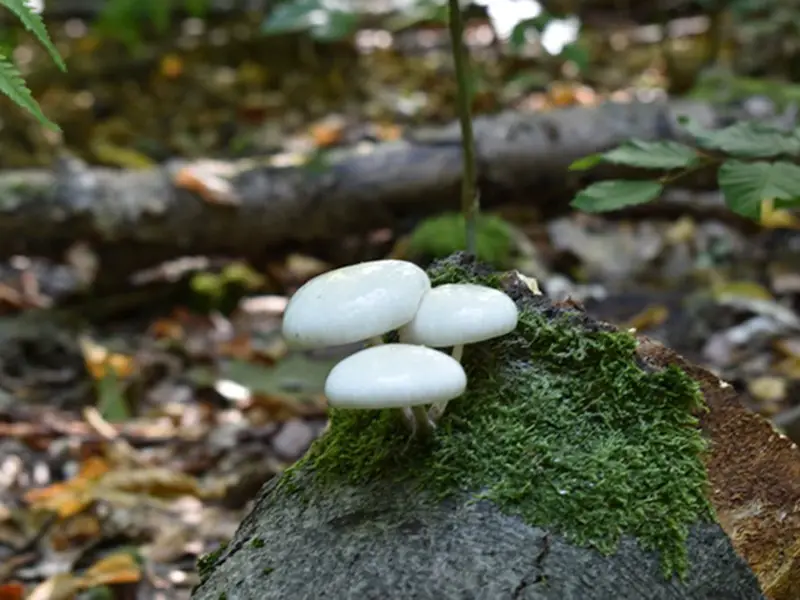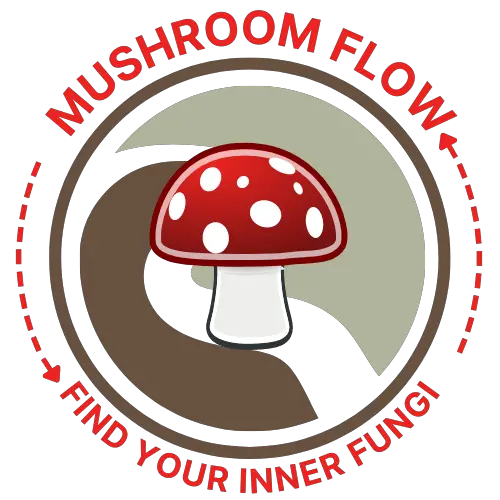It’s common knowledge that fungi can break down organic matter, but what about solid rock or metal? I heard about recent studies on rock-eating fungi, so I had to find out if nature’s recyclers can truly eat other substances like rock and metal.
Fungi can consume rocks and metals by secreting acids in order to break down the surface to allow for hyphal growth. As the hyphae release digestive enzymes, they continue to etch their way through solid rocks and minerals releasing nutrients needed for expansion. The result is a reduction of the original stone and metal, also known as bioweathering.
Bioweathering is a necessary process that creates soil for plants and animals to thrive.

I had no idea that rock-eating fungi are essential for life on Earth! Read on to find out more about these fascinating fungi and their role in keeping our environment balanced.
Fungi, Lichens, and Bacteria
To better understand rock-eating fungi, let’s dive into the world of bioweathering microorganisms including bacteria, lichens and fungi.
Bacteria are complex single cells that can reproduce on its own in all manner of environments. Some bacteria living in our guts improve the immune system. It’s when bacteria replicate quickly in our bodies that infection can occur. Other bacteria can degrade solid rock transforming it to soil.
Lichens are a multi-cellular combination of algae and fungi and get their energy from both photosynthesis and by consuming the substrate on which it grows. Similar to bacteria and fungi, lichens help to break down rocks into smaller particles, creating the right conditions for plants to grow.
Fungi can be either single-celled (yeasts) or multi-celled (mushrooms). Unlike lichens, fungi cannot photosynthesize so they absorb nutrients by decomposing the environment around them.
All three microorganisms (bacteria, lichens and fungi) help to break down solid rock and contribute to the soil necessary for plants to thrive.
How do Fungi Eat Rocks and Metal?
So there’s this unsuspecting rock just sitting on the ground. A hungry fungus finds it and anchors itself. Now the fungus is ready to start snacking.
Initially, fungi use acid to dissolve any surface minerals creating a rough surface. Then the fungus sends hyphae, or filaments, into the damaged rock, breaking up more minerals for its consumption. It is, essentially, a very effective mining expedition.
Fungi reproduce by releasing spores. When the fungi release spores on rocks and metal, the PH drops considerably. This creates an acidic environment creating a “soup” easily consumed by the fungus.
Why do Fungi Consume Metal?
The simplest answer is that they’re hungry. Like any other living organism, Fungi need to eat. As fungi eat, it transforms the soil allowing plants to access minerals even in areas where the soil is high in acid.
Why do Fungus Eat Rocks?
We return to the answer of hunger, as well as necessity. Eating rocks and metals is one way Fungi survive and reproduce in desert and rock prominent landscapes. Fungi secrete acid that releases the nutrients they need from rocks.
What Else do Fungi Eat?
Besides rocks and metal, there are other things that fungi eat. They can’t ingest food like an animal might, so they absorb nutrients from their environment. Fungi grow through and within the substrate where they are feeding.
Fungi can eat trees, leaves, plants, fruits, vegetables, and animals both living and dead. They are omnivores. Since they cannot create their own food, fungi depend on nutrients from other organisms, organic matter, rocks and metal.
Helping the Environment
Fungi eat things that are surprising too, plastic and battery acid are two examples. When you consider landfills, fungi provide a critical way to help our environment. Fungi can feed on plastic because of the fatty acids it contains. As it consumes plastic it makes it brittle.
As for lithium-ion batteries that end up in landfills, it turns out Fungi acid can extract the lithium. In other words, fungi help with recycling and the process is inexpensive and environmentally friendly.
Final thoughts
Estimates put the population of fungi at upward of 3.8 million species. So, if you were to walk outside right now, there would be fungi in your soil. That rock you picked up at the beach may be carrying some fungi (portable lunch!).
There is no question that fungi can eat rocks and metal transforming otherwise indigestible matter into energy for their growth and releasing valuable carbon and metals into the environment. Fungi truly are are nature’s recyclers!
